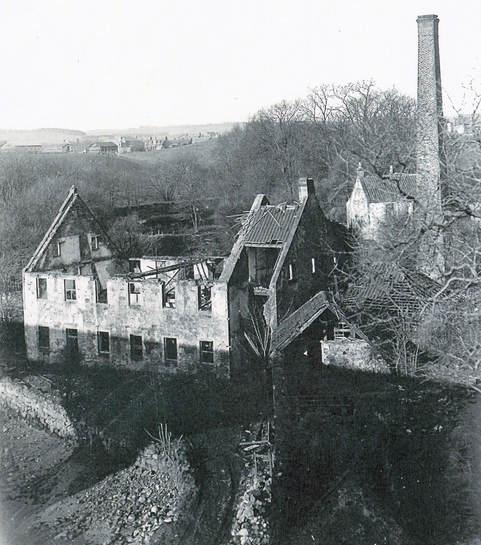|
The previous post opened a series taking an in-depth look at the former mill close to the harbour at Lower Largo. This post continues the tour of the site. By the time the above photo was captured in the 1930s - by Cowie the photographer - the building was in a ruinous state. However, its condition allows us a glimpse at the interior of the mill. Note in particular how the water wheel house can be clearly seen on the right hand side of the main building. A plan and section of the water wheel house, as it would have been around 1861, are shown in the detailed drawing below, created by John Band. A PDF version of the annotated drawing can be opened by clicking here. Looking back at the image at the top of this post, further to the right of the water wheel house, and closer to the foreground, is the former heckle house building. In the spinning mill days, the heckle house was where the first process in the preparation of flax was carried out. However, once the mill had been converted for oil and cake production, this particular building was used to accommodate the oil refining process. The drawing below provides a comprehensive, illustrated explanation of what went on within this part of the mill complex. A PDF of this is available by clicking here. Two further photographs below, show the building in varying states of repair. In the next post - a look at the building to the left of the main mill - a particularly old part of the site.
0 Comments
Your comment will be posted after it is approved.
Leave a Reply. |
AboutThis blog is about the history of the villages of Lundin Links, Lower Largo and Upper Largo in Fife, Scotland. Comments and contributions from readers are very welcome!
SearchThere is no in-built search facility on this site. To search for content, go to Google and type your search words followed by "lundin weebly". Categories
All
Archives
July 2024
|





 RSS Feed
RSS Feed
